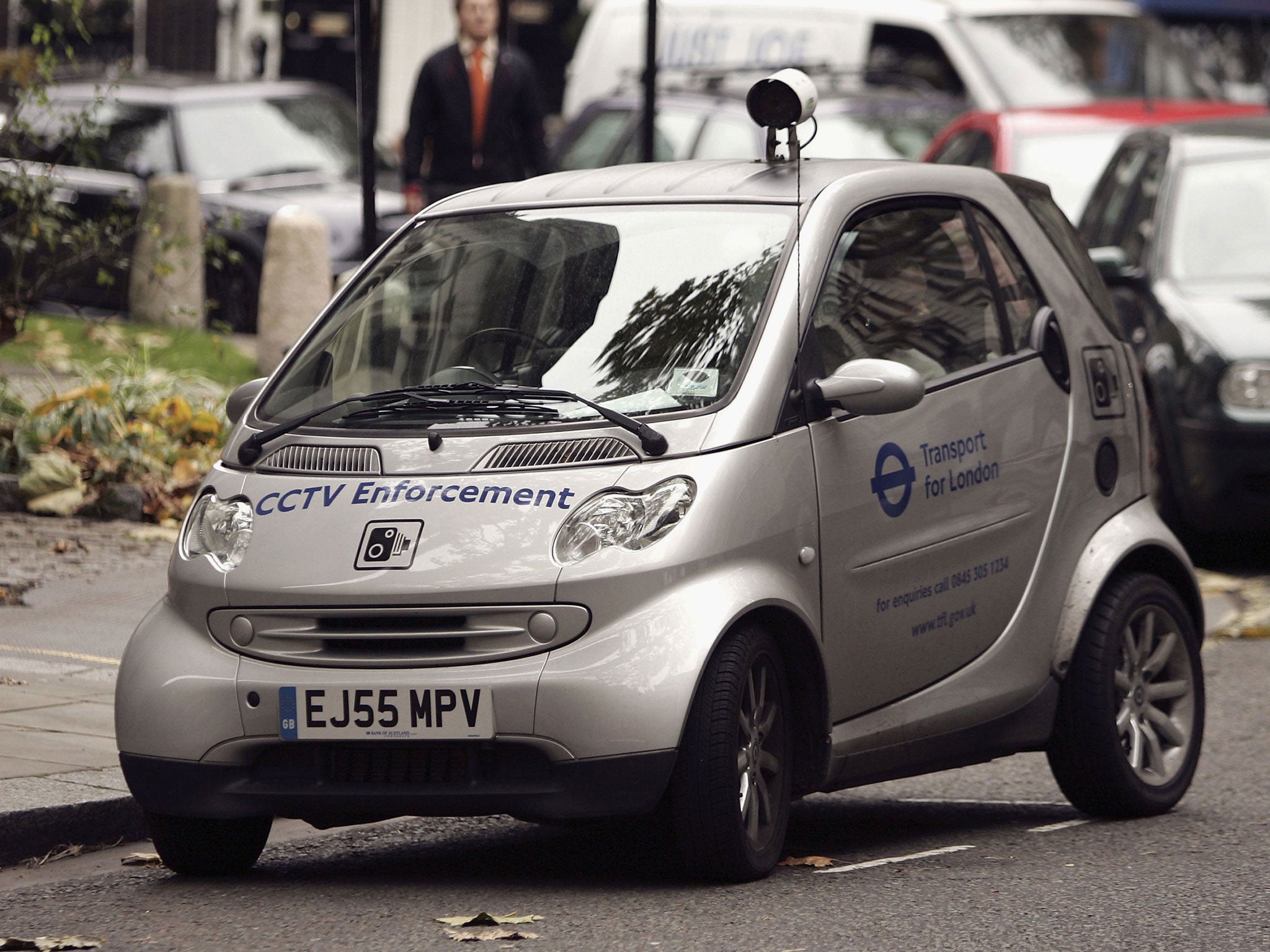Increase in use of CCTV cars raises £312m in traffic fines over five years
Local authorities accused of using cameras for revenue rather than to increase public safety

Surveillance camera footage has been used to raise £312m in traffic fines over five years during a surge in the use of car-mounted CCTV.
Security cameras are supposed to be used only “sparingly” to punish double-parkers, but the Government’s new surveillance camera commissioner, Tony Porter, questioned how well officials knew the rules.
A new national code of conduct says cameras should be used only where other methods are impractical.
However, the £312m figure, obtained through freedom of information requests by the campaign group Big Brother Watch, has led to concerns among anti-surveillance activists about the extent that cameras are used as revenue-raisers rather than public safety.
Big Brother Watch claims that some fines may have been imposed after illegal surveillance conducted by traffic wardens from control rooms, which could require a warrant from a magistrate.
At least 58 local authorities are using CCTV camera cars – an 87 percent increase since 2009 – despite criticisms from rights campaigners, motorists groups and the government about the use of the cameras.
Thirty-six authorities have used static cameras, which provided the majority of penalty fines.
The Government has criticised the “overzealous” use of cameras for fines and officials yesterday predicted a backlash against local authorities which failed to follow the rules.
“I would query the level and extent to which local authorities parking centre managers are au fait with all the principles and have processes to comply with them,” Mr Porter said in an interview with The Independent.
“I believe people will challenge the use of systems and we will get a tailing off in some areas of the use of cameras.”
He declined to comment on claims of illegal camera surveillance by traffic wardens, saying it was not a matter for his office. However, the Government said that it planned to act on “clear misuse” of cameras.
The figures showed that Camden in North London secured most from fines with more than £36m in the five years to March 2013. Four other London boroughs took the rest of the top five slots.
Emma Carr, deputy director of Big Brother Watch, said: “Councils are turning to desperate arguments about public safety to justify their cameras, despite having absolutely no evidence to back up their claims. The use of CCTV and spy cars for parking enforcement should be banned.”
But Councillor Peter Box, chair of the Local Government Association, said: “It is frustratingly familiar to hear Big Brother Watch again peddling the myth that councils are enforcing parking regulations just to raise money.
“Road safety campaigners, schools, disability and pedestrian charities and councils have all come together to warn the Government that banning CCTV parking enforcement will put school children and disabled pedestrians at risk and worsen road safety.”
The CCTV code of conduct overseen by Mr Porter is restricted to state-run cameras in public places – only about five percent of the total in operation – and campaigners say there are no enforcement powers.
Surveillance cameras have proved a controversial issue for local councils and the Government.
Mr Porter’s predecessor, Andrew Rennison, warned in an interview with The Independent in 2012 that increasingly powerful cameras could infringe upon individuals’ right to privacy.
“I’m convinced that if we don’t regulate it properly – ie, the technological ability to use millions of images we capture – there will be a huge public backlash,” said Mr Rennison. “It is the Big Brother scenario playing out large. It’s the ability to pick out your face in a crowd from a camera which is probably half a mile away.”